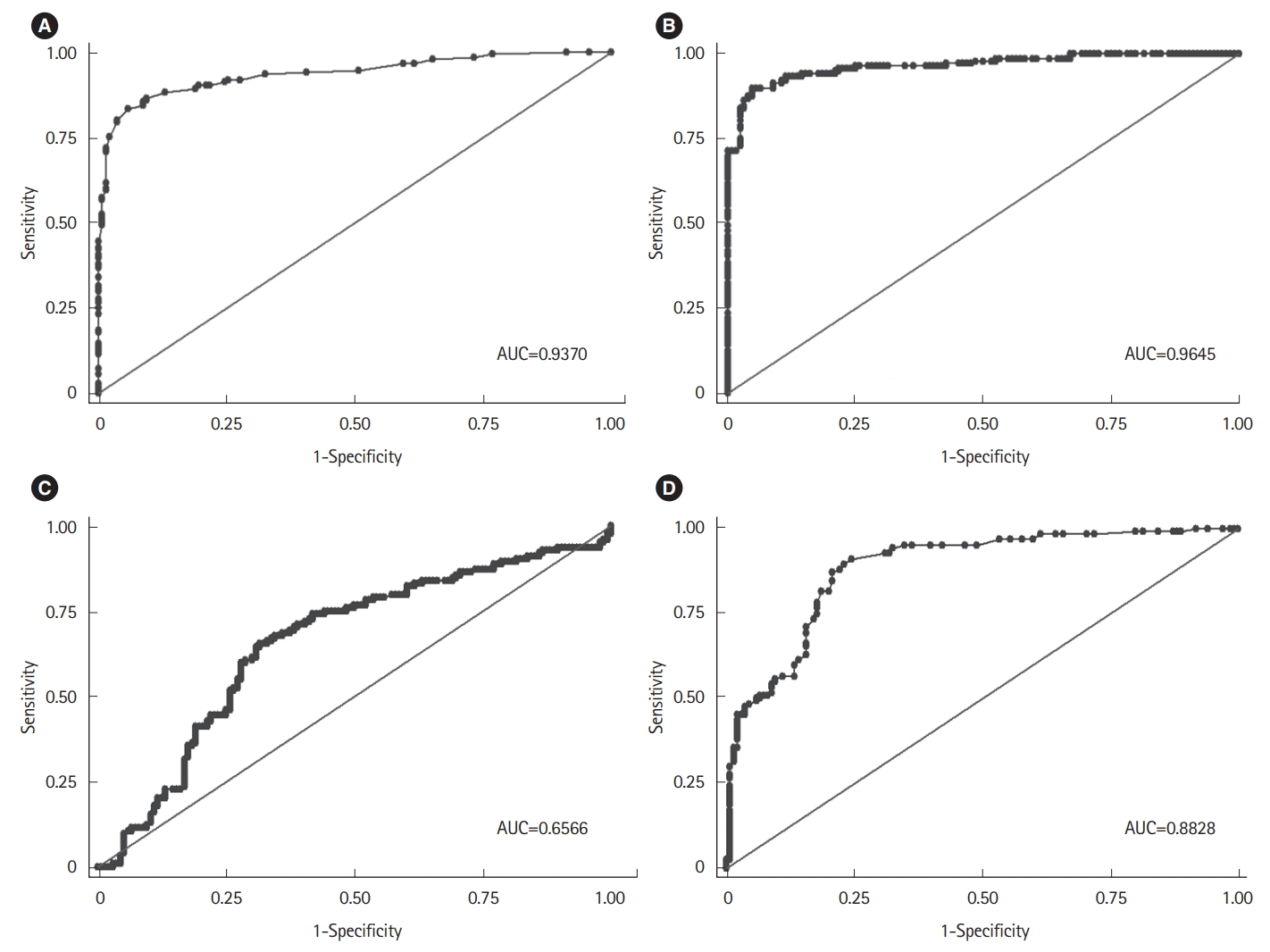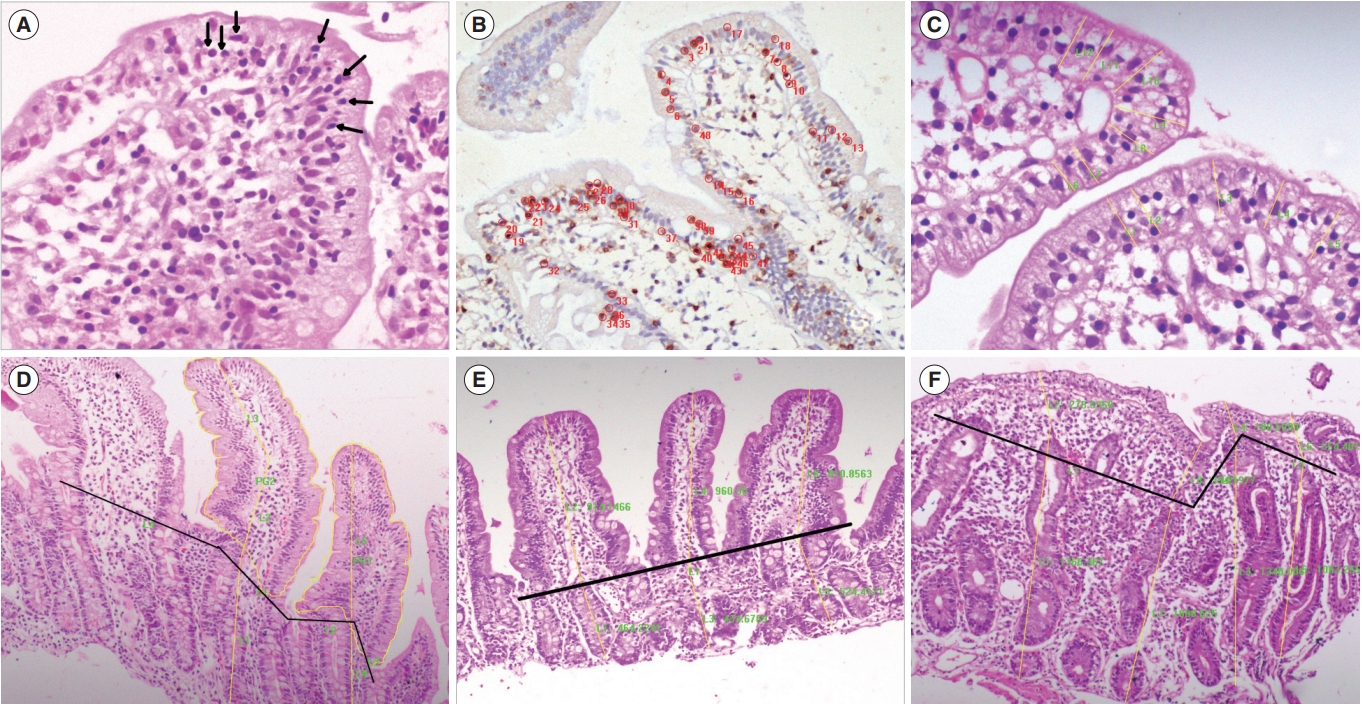 |
 |
- Search
| Intest Res > Volume 17(3); 2019 > Article |
|
Abstract
Background/Aims
Methods
Results
NOTES
FINANCIAL SUPPORT
The work was supported by the Intramural Research Grant, All India Institute of Medical Sciences, New Delhi, India (grant number: A130).
AUTHOR CONTRIBUTION
Das P conceived idea, received the grant, executed the study & is the guarantor of the article. Makharia GK managed all patients and controls, conceived the idea, and performed the study. Gupta SD designed and executed the study. Ahuja V supervised the study. Gahlot GP, Singh A, Yadav R, Baloda V, Rawat R, Verma A recruited the patients, collected data and work execution. Nalwa A, Roy M, George A, Ashok S, Ramteke P, Khanna G participated as an observer. Sreenivas V statistical analyses. Approval of final manuscript: all authors.
ACKNOWLEDGEMENTS
Fig. 1.

Fig. 2.

Table 1.
Values are presented as mean±SD or percent. Parentheses show 95% CI.
CeD, celiac disease; AUROC, area under the receiver operating characteristic; PPV, positive predictive value; NPV, negative predictive value; IEL, intraepithelial lymphocytes; ECs, epithelial cells; Cd, crypt depth; Vh, villous height.
Table 2.
Table 3.
IEL, intraepithelial lymphocytes; EC, epithelial cells; Cd, crypt depth; Vh, villous height.
Notes: (1) Villous height fold change: calculated by dividing the villous height in a case ÷ mean villous height in the control population. (2) Type 1 Q histology refers to-early enteropathy changes; type 2-intermediate enteropathy changes; type 3-advanced enteropathy changes. (3) A duodenal biopsy showing IEL count <25/100 ECs irrespective of normal Vh fold change and Cd to Vh ratio or any abnormality of the latter 2 histological parameters should be assigned Q-histology type 0.
Table 4.
| Intraobserver agreements (based on weighted κ-value) | Interobserver agreements (based on weighted κ-value) | |
|---|---|---|
| Histological classification systems | ||
| Marsh classification [2] | 39.7 to 60.9 | 12.9 to 48.2 |
| Modified Marsh [1] | 46.6 to 63.7 | 28.3 to 48.7 |
| Corazza et al. [5] | 54.6 to 84.6 | 28.04 to 42.9 |
| Ensari [6] | 54.5 to 64.5 | 28.04 to 42.9 |
| Proposed quantitative histological classification | 69.7 to 85.0 | 24.6 to 71.5 |
REFERENCES
- TOOLS








